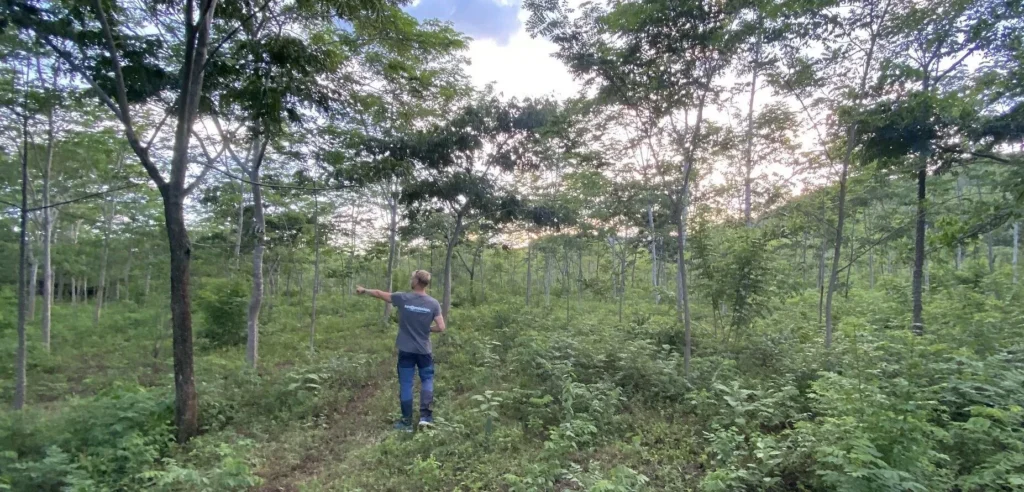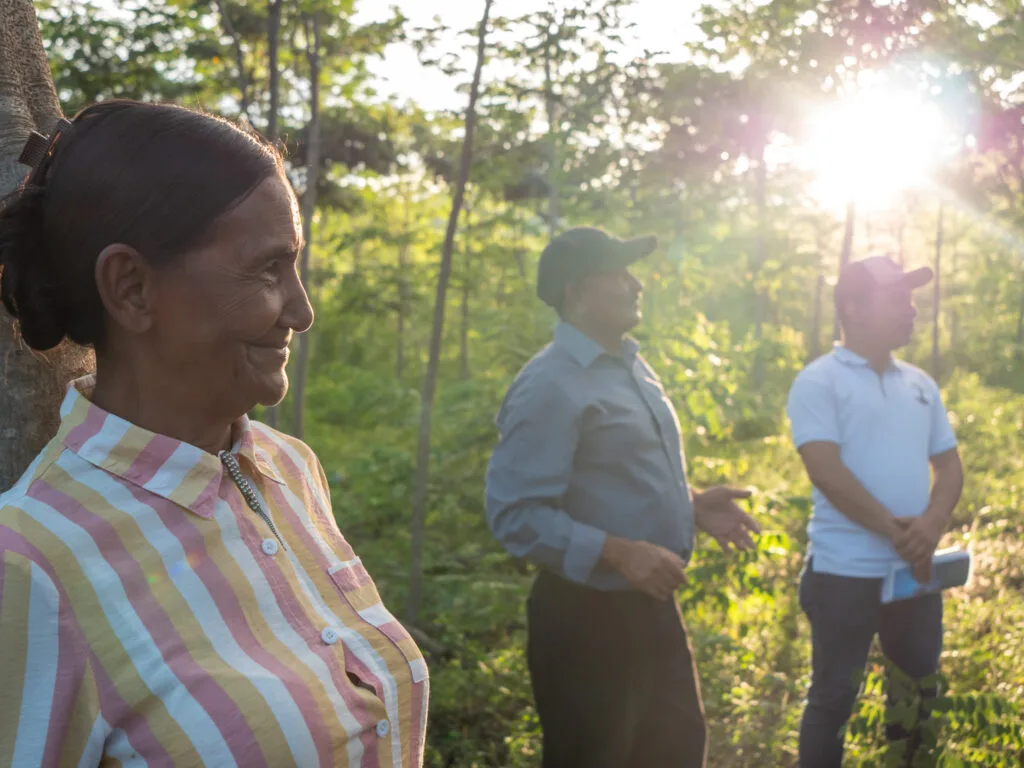Measure, reduce, remove: how your company takes climate responsibility
March 3, 2025
Is your company part of the solution or the problem? In a world of growing climate awareness, it is increasingly important to take control of your carbon footprint - your CO2 waste. Learn how to turn challenges into opportunities and build a more sustainable business that is good for the climate and your business.
Global warming is rapidly reaching dangerous levels, reaching various tipping points* and accelerating climate change. Science is clear that we need to both reduce the world's climate-changing emissions and sequester carbon from the atmosphere. That's why ZeroMission helps clients work on a Measure - Reduce - Sequester CO2 model, which includes measuring emissions at all stages, reducing them based on scientific targets, while taking responsibility for the emissions being made right now. By funding forestry projects, a method available here and now, carbon dioxide is captured from the atmosphere while providing positive effects for people and the environment.
Measuring CO2
A company's carbon footprint is a measure of the total greenhouse gas emissions directly and indirectly linked to its activities. The footprint can also be calculated per product, or per product range. Calculating your company's carbon footprint is a reflection of the impact your company has on the environment in terms of climate change, taking into account all activities from production to distribution and beyond - an essential first step in reducing emissions.
In recent years, with sustainability legislation such as CSRD, measuring climate impact has become increasingly incorporated into companies' overall strategies. It is now considered almost a hygiene factor. But the trend goes beyond legislation. Companies that do not manage their carbon footprint become less attractive to investors, stakeholders, customers and employees.
But what emissions are being calculated, and do all activities need to be included? Yes, ideally. But the important thing is to focus on the biggest sources of emissions first and to be transparent in your approach, both in methodology and in external communication. It is important to strive not to mislead, hide or in any way embellish actual emissions. When it comes to realizing what is actually to be calculated, a feasibility study can be helpful. A feasibility study defines what is to be measured, taking into account the size of emissions, preferences and possible legislation, and is a good way to provide relevant insights into the activity, providing a solid basis for further calculations.
But then what? It may seem complicated, but the truth is that calculating the climate impact of products or activities has never been so easy, and the market to meet the needs is constantly growing. Gone are the days when climate calculations were done in complicated and unwieldy sheets in Excel. For sustainability managers today, there are web-based platforms at hand, adapted to everything from large companies with international operations, to small local service companies.

Reducing CO2
So, now you have all the calculations in place, you have done your homework and it has paid off. You now have a crystal clear picture of where your emissions come from. But what happens next? A natural next step is to set strategies to reduce your climate impact. But as anyone who's been there knows, that's certainly easier said than done, so how do you actually go about it? Let's start by eating the elephant in the room.
It is important to get to the bottom of the issue and be clear about your goals. Embarking on the journey to reduce emissions often requires major changes in an organization's operations, and it is crucial that everyone is on the same page so that management, staff and the board understand the changes needed to bring about change. Acceptance that it is difficult must go hand in hand with determination and creativity. Brave companies are already showing that it is possible to grow while reducing emissions.
Bind CO2
Once you've made it all the way there, by first mapping and calculating emissions and then setting strategies to reduce them, you should really stop and pat yourself on the back. However, you are not quite there yet. Because the fact is that the Intergovernmental Panel on Climate Change (IPCC) is clear that we will need to use negative emissions - ways to sequester carbon dioxide from the atmosphere, your CO2 waste - to have a chance of meeting the Paris Agreement's 1.5-degree target. This is regardless of how quickly we succeed in reducing emissions.
At its core, it's about businesses taking responsibility for the climate impact you create, just as you already take full responsibility for your other waste. Funding climate projects, while reducing your carbon footprint, can both incentivize continued action and demonstrate a responsible approach in the meantime. Few companies can reach zero carbon footprint right away. One way to show that you are taking responsibility here and now is to buy carbon credits for the climate impact you cannot get rid of immediately. It is also a way to create an incentive for the company to reduce the climate impact and get a continuity over time, all reduction measures that succeed will reduce the cost of carbon credits so that you save money over time by reducing emissions.

But speaking of costs, how can the cost be justified? As mentioned earlier, carbon dioxide and other greenhouse gases can be seen as waste, just like glass and metal packaging or used light bulbs and batteries. They are materials in a cycle that need to be managed and to some extent returned to the cycle to be useful, otherwise they accumulate in the wrong place and cause major problems. Carbon from fossil fuels should not be in the atmosphere, just as heavy metals from the Earth's crust should not be in the biosphere. And just like your company pays for someone to come and collect your waste from the office, you need to pay for someone to sequester the extra climate impact, your CO2 waste, your business has created. The difference with the regular waste fractions is that greenhouse gases are not visible, and paying for their disposal is still voluntary.
ZeroMission's solution for an effective, low-cost, large-scale method of carbon sequestration is spelled out - trees. Healthy, diverse forests sequester carbon and help mitigate climate change. We know that. But trees are more than just a carbon sink. Unlike technical solutions for negative emissions, they improve habitats for wildlife, prevent soil erosion, create livelihoods and contribute to important ecosystem services. It is these benefits - beyond carbon - that make the case for nature-based solutions.
Projects that issue carbon credits create climate benefits in a verifiable way. The projects prevent, reduce or sequester carbon dioxide and also improve the social, health and economic conditions of the local population they affect. ZeroMission helps you find projects that benefit both the climate and the environment as well as the people who live there.
We need to act now. The climate crisis will not wait. By measuring, reducing and sequestering carbon, we can create positive impacts for both your business and the climate.
*Tipping points = a scientific term often used in relation to talking about the effects of climate change that describes an overshoot scenario that cannot be reversed.
/https%3A%2F%2Fzeromission.se%2Fwp-content%2Fuploads%2F2025%2F06%2FZeroMissipon_almedalen_Take-Aways-scaled.jpeg)
/https%3A%2F%2Fzeromission.se%2Fwp-content%2Fuploads%2F2025%2F06%2FHeader_ZeroMission_Spaningar-Almedalen.png)
/https%3A%2F%2Fzeromission.se%2Fwp-content%2Fuploads%2F2025%2F06%2FZeroMission_Exponential-Roadmap_Science-Based-Targets.png)